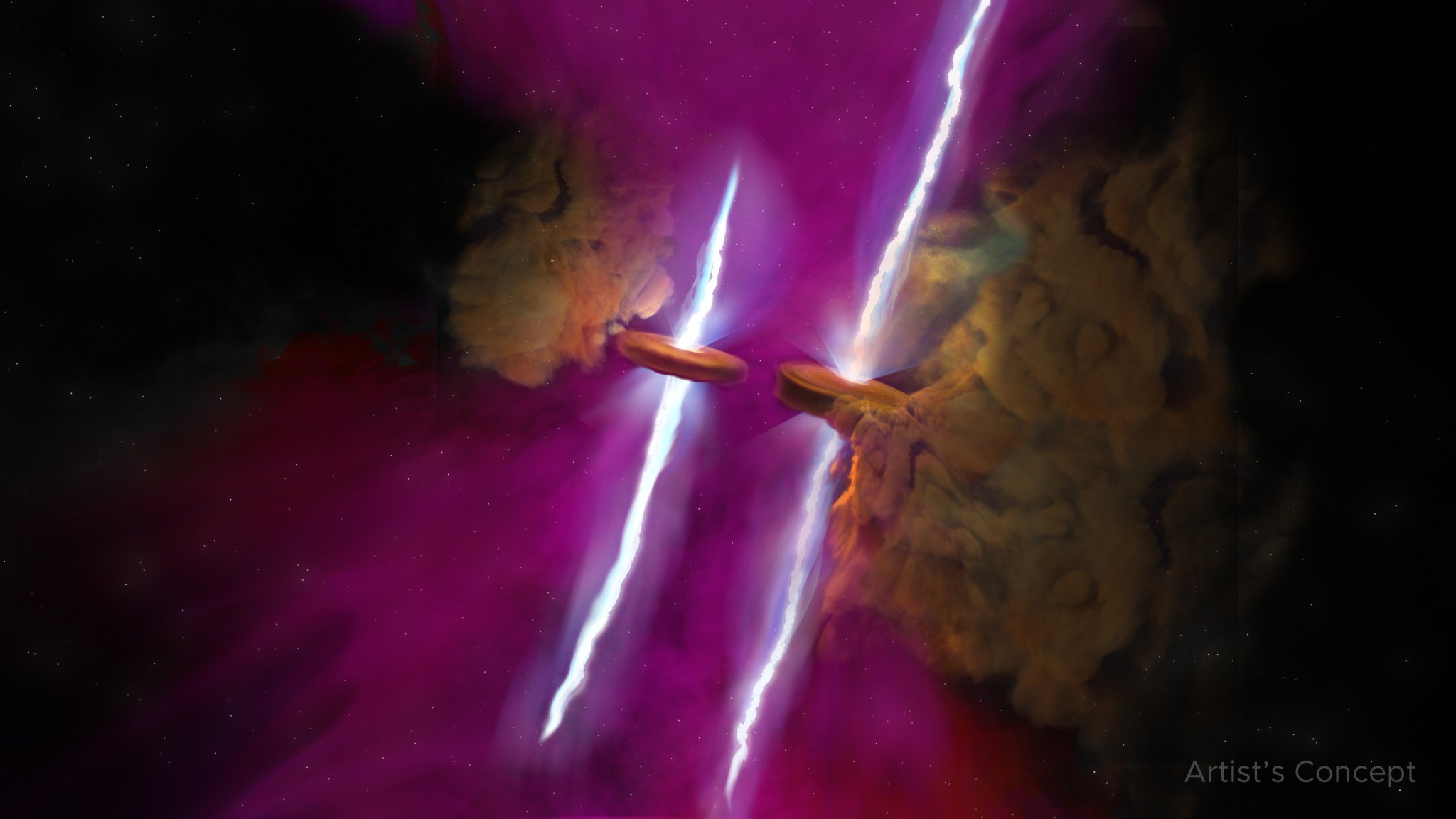5 min read
Managed by NASA's Jet Propulsion Laboratory through launch, Webb's Mid-Infrared Instrument also revealed jets of gas flowing into space from the twin stars.
Scientists recently got a big surprise from NASA's James Webb Space Telescope when they turned the observatory toward a group of young stars called WL 20. The region has been studied since the 1970s with at least five telescopes, but it took Webb's unprecedented resolution and specialized instruments to reveal that what researchers long thought was one of the stars, WL 20S, is actually a pair that formed about 2 million to 4 million years ago.
The discovery was made using Webb's Mid-Infrared Instrument (MIRI) and was presented at the 244th meeting of the American Astronomical Society on June 12. MIRI also found that the twins have matching jets of gas streaming into space from their north and south poles.
"Our jaws dropped," said astronomer Mary Barsony, lead author of a new paper describing the results. "After studying this source for decades, we thought we knew it pretty well. But without MIRI we would not have known this was two stars or that these jets existed. That's really astonishing. It's like having brand new eyes."

The team got another surprise when additional observations by the Atacama Large Millimeter/submillimeter Array (ALMA), a group of more than 60 radio antennas in Chile, revealed that disks of dust and gas encircle both stars. Based on the stars' age, it's possible that planets are forming in those disks.






